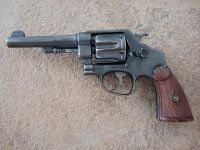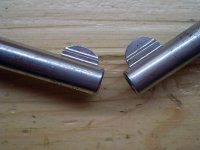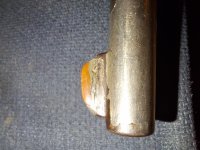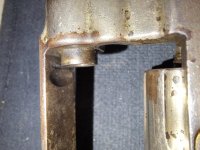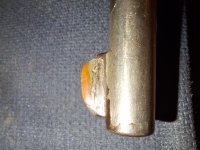Here is the barrel curve/dog leg that I appear to see. . . It seems to cant up right, perhaps it was dropped? . . .
You have a very big problem there, as I think the barrel is 1/4" to 1/2" high at the muzzle! The barrel/frame is indeed bent up and there is no way I would shoot the gun before addressing this problem. More likely it was used to hit something or someone. It does resemble a hammer and old-time law enforcement were not adverse to "buffalo" crooks and criminals.
You should find a gunsmith that does work on older revolvers. I would think it possible to bend the barrel/frame back into position, but one must be looking very closely for distress to the frame before firing. It would be good to take some pictures around the barrel/frame/cylinder. First, take a picture of the cylinder gap at the rear of the barrel, looking for visible space difference between the top and bottom of the barrel. Take a picture of the front of the yoke/frame to look for misalignment when the cylinder if closed. Lastly, a picture of the rear of the cylinder and the rebound plate, again looking for differences between the top and bottom of the cylinder.
Here is what a properly aligned barrel on a 32 Winchester Model 1899 should look like. Also, let me add your image and it looks like 1/4" to me.
Attachments
Last edited:



